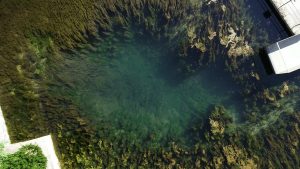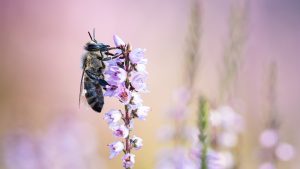The pine
After the spruce and before the common beech, the forest pine (Pinus sylvestris) is the most commonly grown tree species in Germany. It can reach heights of 30 to 40 metres, a trunk diameter of 1 metre and can live up to 600 years.
From the Weymouth pine (Pinus strobus), which is also occasionally grown in the Senne, the forest pine differs in that it always has 2 needles together and is held together by small leaves at the base (with the Weymouth pine it is 5 needles). The two-needle black pine (Pinus nigra) grown in the region, but not in the Senne, has 8-15 cm long needles, while those from the forest pine are only 3-8 cm long.
Another characteristic of the forest pine can be seen from afar: In older trees, the lower half of the trunk is grey-brown, the bark has deep cracks and coarse scales. The upper half is yellowish-reddish in colour with thin, parchment-like scales.
The needles of the forest pine remain on the branch for 2 to 4 years. And the cones also hang on the tree for a long time: only in the third year do they release the winged seeds. The trees produce a lot of resin, which they use to close the wound if the bark is damaged. The needles contain essential oils that are used as an expectorant for bronchitis.
Forest pines are ready to be cut after 80 to 120 years. The wood is harder and denser than that of spruce and fir. It is used in interior construction for window frames, furniture and floorboards. Weak and low-quality wood is processed into chipboard and wood wool.







